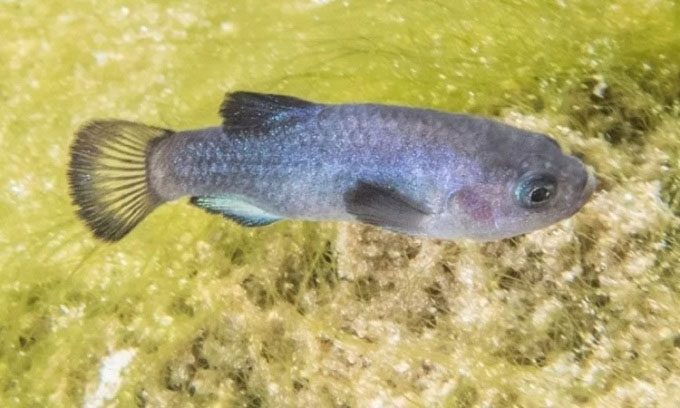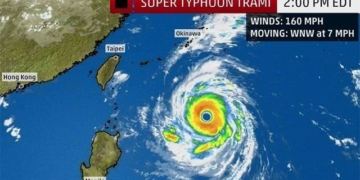Researchers Discover Hundreds of the World’s Most Isolated Fish Species After Earthquake in Nevada Reveals Their Location.

Devil’s Hole Pupfish only exists in a submerged cave in Nevada. (Photo: NPS)
According to the National Park Service (NPS), biologists have counted 263 Devil’s Hole Pupfish in Nevada, the highest number of this species recorded in the past 19 years. This fish species is exclusively found in Devil’s Hole, a submerged cave located on a hillside, over 152 meters deep. Devil’s Hole is situated in Ash Meadows, a wildlife refuge that contains a vast underground aquifer system.
Many areas in the region host wildlife during the rainy season and become isolated during the dry season. The Devil’s Hole Pupfish is believed to have been isolated for 10,000 to 20,000 years, according to the NPS. Within the cave, the pupfish live and breed on shallow rock shelves near the water’s surface and feed on algae. They are among the smallest vertebrates on Earth.
Each year, the population of Devil’s Hole Pupfish fluctuates between 100 to 200 individuals in winter and 300 to 500 in summer, depending on the availability of algae. In the mid-1990s, the population of Devil’s Hole Pupfish began to mysteriously decline. Experts have yet to fully understand the cause, despite conducting numerous studies on water chemistry and genetics. The U.S. Fish and Wildlife Service designated an area of nearly 8,500 acres as essential habitat for the species’ recovery plan in the 1980s.
The discovery of 263 pupfish this year followed a strong earthquake measuring 7.6 in Mexico that generated 1.2-meter-high waves inside Devil’s Hole on September 19, stirring up algae and organic material within the cave, making it easier for biologists to locate the pupfish. The fish were counted using image counting technology from the water’s surface and through divers.
The counting results mark an increase from the average of 90 fish over the past two decades, potentially revealing significant changes in the ecosystem. The counted pupfish appeared to be in good condition and very active, with many pairs mating and spawning. The next pupfish count will take place in the spring of 2023.





















































